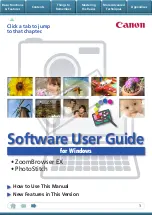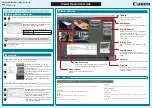
ADOBE PHOTOSHOP ELEMENTS 9 CLASSROOM IN A BOOK
27
For teaching opportunities, look for those dialog box options, menu commands,
tool settings, and background concepts that are not specifically covered in each
exercise. Remember that you can also use margin tips and notes and the Review
Q&A at the end of the chapter to help you identify extra teaching opportunities and
discussion points.
Questions
1
Detail two ways in which layer blending modes can be used to address exposure
problems.
2
What does the graph in the Levels dialog box represent?
3
When you have more than one image window open in Full Edit mode, how can
you tell which is the active image?
Answers
1
If a photo is underexposed—too dark—duplicating the background layer and
applying the Screen blending mode to the new layer may correct the problem.
Inversely, if your photo is overexposed—too light—duplicating the background
layer and applying the Multiply blending mode may be a solution. If either of
these techniques produces too strong an affect, you can use the layer opacity
setting to tone it down.
2
The Levels graph represents the distribution of tonal values across all the pixels
in the image, from darkest at the left to lightest at the right. A trough (or gap)
in the curve shows that there are few (or no) pixels mapped to that part of the
range; a peak indicates the opposite.
3
The active image is indicated by the bold text in its name tab, and by a blue
border around its thumbnail in the Project Bin.
Lesson 9: repairing, retouching, and
recomposing Images
This lesson will reinforce your students’ familiarity with the Editor while extend-
ing their understanding of the use of selections to include masks, and introducing
retouching tools such as the Healing Brush, the Spot Healing brushes, and the Clone
Stamp tool. Lesson 9 also covers the Straighten tool and the new Recompose tool.
The lesson can easily be extended to cover the creative use of some of the same
tools and techniques to add objects to or remove them from an image.







































